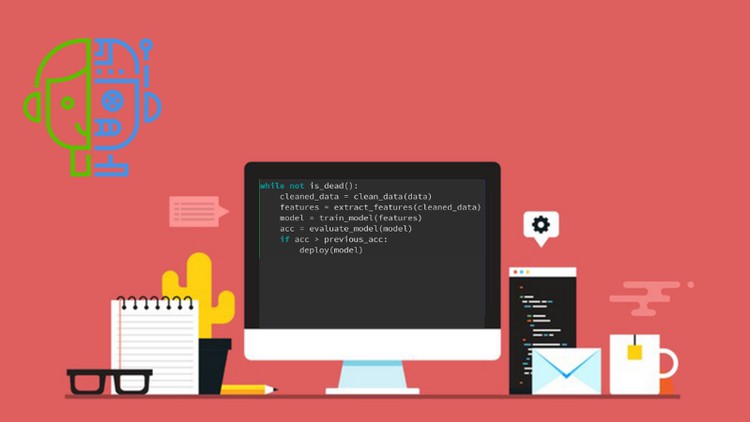
Learn, hands-on, how to build and manage Machine Learning Systems
What you will learn
How To Efficiently Build Sustainable And Scalable Machine Learning Projects Using The Best Practices
Data Versioning
Distributed Data Processing
Feature Extraction
Distributed Model Training
Model Evaluation
Experiment Tracking
Error analysis
Model Inference
Creating An Application Using The Model We Train
Metadata management
Reproducibility
Description
Are you ready to take your Machine Learning skills to the next level and develop projects that have real-world impact and are sustainable for the future? Look no further! This course is designed to give you the comprehensive knowledge and hands-on experience you need to design, build and maintain successful Machine Learning projects at scale.
In this course, you will learn how to tackle the most pressing challenges faced by ML professionals today, such as handling increasing amounts of data and ensuring that model and project development are both scalable and sustainable in the long run. Throughout the course, you will gain hands-on experience with the latest ideas and techniques used by top ML practitioners, and learn how to apply these techniques to real-world projects. From data versioning and data pre-processing, to model training, evaluation and versioning, you will acquire a deep understanding of each stage of the ML project development process.
You will also delve into the practical aspects of building scalable and sustainable ML projects, including designing robust pipelines and workflows. Throughout the course, you will work on a real-world project that will put your knowledge to test, and you will receive feedback and guidance from an experienced instructor who has worked on large-scale ML projects in the industry. You will also learn how to work with cloud-based ML infrastructure to ensure your projects are easily scalable. By the end of the course, you will have a powerful completed project in your portfolio that showcase your skills and demonstrate your ability to build and maintain scalable and sustainable ML solutions.
In this course, a strong emphasis is placed on sustainability, helping you avoid common pitfalls and ensuring that your projects can handle growing complexity, while remaining scalable and efficient in the long run. You will learn how to design projects that are robust and adaptable, and how to ensure that they will continue to provide value even as the industry evolves.
Join us today and become part of a vibrant community of ML professionals, through our chat platform (Slack), who are driving innovation and change in the industry. By the end of the course, you will have the confidence and skills needed to turn your ideas into successful and scalable ML solutions. Start your journey towards becoming a top ML professional!
Content